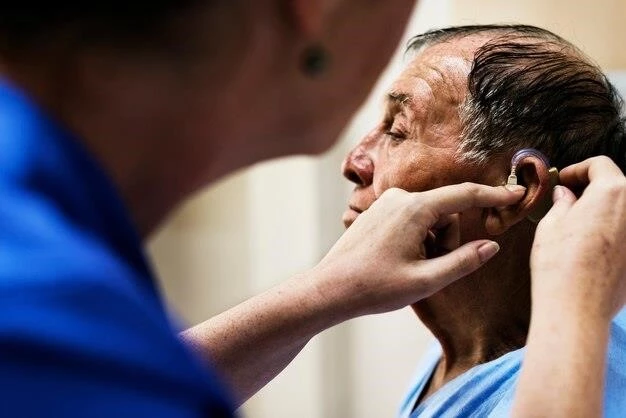Introduction to Occipital Horn Syndrome⁚
Occipital horn syndrome is a rare congenital disorder characterized by bony exostoses‚ including occipital horns‚ and connective tissue manifestations. It is caused by abnormal copper transporter proteins encoded by the ATP7A gene.
Occipital horn syndrome is a rare X-linked recessive disorder associated with copper metabolism disruptions. The disease is marked by bony exostoses‚ such as occipital horns‚ as well as connective tissue abnormalities‚ including cutis laxa and bladder diverticula. It is primarily caused by mutations in the ATP7A gene‚ impacting copper transporter protein production.
Definition and Overview
Occipital horn syndrome is a rare X-linked recessive disorder affecting copper metabolism and characterized by bony exostoses‚ including distinct occipital horns‚ and connective tissue abnormalities. It is primarily caused by mutations in the ATP7A gene‚ disrupting the production of copper transporter proteins.
Role of ATP7A Gene
The ATP7A gene plays a crucial role in the manifestation of Occipital Horn Syndrome by encoding copper transporter proteins. Mutations in this gene result in disruptions in copper metabolism‚ leading to the distinct clinical features associated with the syndrome‚ such as bony exostoses and connective tissue abnormalities.
Connection to Copper Metabolism
Occipital horn syndrome is intricately linked to disruptions in copper metabolism due to mutations in the ATP7A gene. This genetic alteration affects the production of copper transporter proteins‚ leading to abnormal copper levels in the body and contributing to the distinctive clinical features seen in individuals with the syndrome‚ such as bony exostoses and connective tissue abnormalities.

Clinical Presentation and Symptoms⁚
Chronic diarrhea can be observed in some individuals with Occipital Horn Syndrome. Other common symptoms include bony exostoses‚ like occipital horns‚ loose and sagging skin‚ wedge-shaped calcium deposits‚ coarse hair‚ loose joints‚ and connective tissue abnormalities.
Bony Exostoses and Occipital Horns
Bony exostoses and occipital horns are characteristic features of Occipital Horn Syndrome‚ which present as distinctive protrusions at the base of the skull. These bony growths are associated with connective tissue abnormalities and are indicative of the underlying copper metabolism disruptions caused by mutations in the ATP7A gene.
Connective Tissue Manifestations
Occipital horn syndrome is characterized by loose and sagging skin‚ wedge-shaped calcium deposits in the occipital bone‚ coarse hair‚ and loose joints. These connective tissue abnormalities are part of the syndrome’s clinical presentation and are attributed to disruptions in copper metabolism caused by mutations in the ATP7A gene.
Imaging plays a key role in the diagnosis of Occipital Horn Syndrome‚ with imaging modalities such as X-rays or CT scans being utilized to visualize the bony exostoses and characteristic occipital horns. These techniques aid in identifying the distinct skeletal abnormalities associated with the syndrome.
Imaging Techniques for Identification
In diagnosing Occipital Horn Syndrome‚ healthcare providers often employ imaging techniques such as X-rays or CT scans. These imaging modalities help visualize bony exostoses and the unique occipital horns characteristic of the syndrome‚ aiding in its identification through the observation of distinct skeletal abnormalities.
Genetic Testing for Confirmation
Genetic testing plays a crucial role in confirming the diagnosis of Occipital Horn Syndrome. By analyzing the ATP7A gene for mutations‚ healthcare providers can definitively identify the genetic basis of the syndrome and provide targeted management strategies based on the individual’s genetic profile.
Distinction from Menkes Disease lies in the presentation of Occipital Horn Syndrome’s milder symptoms‚ including wedge-shaped calcium deposits in the occipital bone‚ loose connective tissue‚ and less severe developmental impairments‚ allowing affected individuals to live into adulthood.
The distinctive features of Occipital Horn Syndrome‚ such as less severe developmental impairments and the ability to survive into adulthood‚ influence both the prognosis and treatment approaches for affected individuals. Unlike Menkes Disease‚ patients with Occipital Horn Syndrome often have a milder disease course‚ affecting their long-term outlook and management strategies.
Impact on Prognosis and Treatment
The milder symptoms and longer lifespan of individuals with Occipital Horn Syndrome‚ compared to Menkes Disease‚ contribute to a more favorable prognosis. This difference influences the treatment strategies employed‚ with a focus on managing the specific symptoms and copper deficiency associated with Occipital Horn Syndrome for improved long-term outcomes.
Management of Symptoms
Treatment for Occipital Horn Syndrome focuses on managing the symptoms associated with the disorder‚ including addressing bony exostoses‚ connective tissue abnormalities‚ and copper deficiency-related manifestations‚ to improve the individual’s quality of life and long-term prognosis.
Therapies to Address Copper Deficiency
Therapeutic interventions for Occipital Horn Syndrome focus on addressing copper deficiency associated with ATP7A gene mutations. Treatment approaches may involve copper supplementation‚ dietary modifications‚ and close monitoring of copper levels to mitigate the effects of copper imbalance on the individual’s health and well-being.
Differentiating Factors
Occipital Horn Syndrome‚ while sharing similarities with Menkes Disease‚ exhibits distinguishing features such as milder symptoms and a longer lifespan. These differences impact the management and prognosis of affected individuals‚ highlighting the unique aspects of Occipital Horn Syndrome within the spectrum of copper metabolism disorders.

Research and Studies⁚
Occipital Horn Syndrome‚ attributed to ATP7A mutations‚ shows promising advancements in research. Recent studies aim to enhance understanding of genetic mechanisms underlying the syndrome and explore potential therapeutic breakthroughs for improved management and outcomes.
Recent Findings in Occipital Horn Syndrome
Recent research on Occipital Horn Syndrome has focused on advancements in understanding the genetic mechanisms linked to the disorder. Studies aim to elucidate the roles of ATP7A gene mutations in copper metabolism disruptions‚ providing insights into potential therapeutic breakthroughs for managing the syndrome effectively.
Advances in Understanding Genetic Mechanisms
Recent studies have made significant strides in unraveling the genetic intricacies of Occipital Horn Syndrome. By delving into the mutations within the ATP7A gene‚ researchers aim to deepen their comprehension of how these genetic alterations result in the clinical manifestations seen in individuals with the syndrome‚ paving the way for potential therapeutic breakthroughs that target the underlying genetic mechanisms.
Neurological complications in Occipital Horn Syndrome may lead to cognitive and developmental challenges‚ necessitating specialized management and support strategies to address the unique needs of affected individuals and optimize their overall well-being.
Nervous System Involvement and Implications
Occipital Horn Syndrome can involve neurological complications‚ impacting the nervous system functions. Understanding the implications of such involvement is crucial for devising comprehensive management strategies tailored to address the unique challenges individuals with Occipital Horn Syndrome may face.
Cognitive and Developmental Challenges
Occipital Horn Syndrome can present cognitive and developmental challenges due to its neurological implications; Patients may require tailored management approaches and support to address these specific challenges effectively. Understanding the impact on cognitive and developmental aspects is essential for providing comprehensive care and optimizing outcomes for individuals with Occipital Horn Syndrome.
Rarity of Occipital Horn Syndrome
Occipital Horn Syndrome is a rare genetic disorder‚ with only about 35 reported cases worldwide‚ primarily affecting males. The exact prevalence of this condition remains unknown‚ underscoring its rarity within the spectrum of genetic disorders.
Occipital Horn Syndrome predominantly affects males‚ with approximately 35 reported cases worldwide. The condition’s exact prevalence remains unknown‚ highlighting its rarity and the male gender bias observed in affected individuals.
Demographics and Gender Distribution
Occipital Horn Syndrome‚ while primarily affecting males‚ has a reported 35 cases worldwide. Its exact prevalence remains uncertain‚ underscoring its rarity and the male gender predisposition observed within the impacted population.
Occipital Horn Syndrome can result in functional limitations and daily challenges for affected individuals. Managing these aspects is vital to enhance the quality of life and overall well-being of those living with the condition.
Psychological and Social Aspects
Individuals with Occipital Horn Syndrome may face psychological and social challenges due to the impact of the condition on their physical health and daily functioning. Supportive interventions that address these aspects are essential for enhancing the overall quality of life and well-being of affected individuals.
Functional Limitations and Daily Challenges
Occipital Horn Syndrome can lead to functional limitations and daily challenges for individuals‚ affecting various aspects of their lives. Addressing these limitations with appropriate interventions and supportive strategies is essential for optimizing the quality of life and well-being of those living with the condition.
Orthopedic interventions in Occipital Horn Syndrome focus on managing bone abnormalities‚ including bony exostoses like occipital horns. Understanding the specific orthopedic considerations and implementing appropriate interventions are essential for optimizing the skeletal health and overall well-being of individuals with this condition.
Role of Surgical Procedures
For individuals with Occipital Horn Syndrome‚ the role of surgical procedures may be considered to address specific orthopedic abnormalities associated with the condition. Surgical interventions tailored to the individual’s needs and bone abnormalities can help improve musculoskeletal function and overall quality of life.
Addressing Bone Abnormalities
Patients with Occipital Horn Syndrome may require orthopedic interventions to address bone abnormalities‚ particularly bony exostoses like occipital horns. Implementing appropriate surgical procedures tailored to individual needs can help manage skeletal issues and improve overall musculoskeletal function.
Promising Areas of Study
Future research in Occipital Horn Syndrome holds promise in exploring the impact of ATP7A mutations on copper deficiency and the development of novel therapeutic interventions targeting the underlying genetic mechanisms. Investigating promising areas of study may lead to enhanced management strategies and improved outcomes for individuals with the syndrome.
Exploration of potential therapeutic breakthroughs in Occipital Horn Syndrome centers on addressing the underlying genetic mechanisms disrupted by ATP7A mutations. Harnessing novel therapeutic strategies based on emerging research findings offers promise for advancing treatment options and enhancing outcomes for individuals affected by this rare disorder.
Potential Therapeutic Breakthroughs
Emerging research in Occipital Horn Syndrome focuses on novel therapeutic interventions targeting the underlying genetic mechanisms. Investigating potential breakthroughs based on ATP7A mutations offers hope for advanced treatment strategies and improved outcomes for individuals affected by this rare disorder.
Resources for Individuals and Families
Support networks and advocacy groups play a vital role in providing resources for individuals and families affected by Occipital Horn Syndrome. Accessing these resources can offer valuable support‚ information‚ and a sense of community for those navigating the challenges associated with the condition.
Community engagement plays a crucial role in providing emotional support and advocacy for individuals and families affected by Occipital Horn Syndrome. By fostering a sense of community‚ raising awareness‚ and promoting education‚ advocacy efforts help empower individuals to navigate the challenges associated with the condition and access necessary resources for comprehensive care.
Importance of Community Engagement
Community engagement is crucial for providing support and advocacy for individuals and families impacted by Occipital Horn Syndrome. By fostering a sense of belonging and raising awareness‚ community involvement can empower affected individuals‚ enhance education‚ and facilitate access to essential resources for better outcomes and quality of life.
Associated Health Issues
Occipital Horn Syndrome is associated with various health complications‚ including chronic diarrhea‚ connective tissue manifestations‚ and skeletal abnormalities. Understanding these comorbidities is crucial for comprehensive management and improved quality of life for individuals affected by this rare condition.
Individuals with Occipital Horn Syndrome may face an increased risk of secondary health conditions due to the unique characteristics of the disorder. Understanding these risk factors is essential for proactive management and preventive measures to mitigate potential complications and promote overall well-being in individuals affected by the syndrome.
Risk Factors for Secondary Conditions
Individuals with Occipital Horn Syndrome may face an increased risk of secondary health conditions due to the unique characteristics of the disorder. Understanding these risk factors is crucial for proactive management and preventive measures to mitigate potential complications and promote overall well-being in individuals affected by the syndrome.
Follow-Up Strategies
Long-term care for individuals with Occipital Horn Syndrome necessitates regular monitoring and follow-up to address potential complications and optimize overall health outcomes. Establishing structured follow-up strategies is essential for ongoing management and ensuring the well-being of affected individuals over time.
Ensuring optimal long-term care and monitoring for individuals with Occipital Horn Syndrome requires a multidisciplinary approach involving healthcare professionals from various specialties. Collaboration among specialists‚ including geneticists‚ neurologists‚ orthopedic surgeons‚ and other relevant experts‚ is essential for comprehensive care coordination‚ addressing diverse needs‚ and enhancing quality of life for individuals living with this rare genetic disorder.
Multidisciplinary Approach to Care
The management of Occipital Horn Syndrome requires a multidisciplinary approach involving specialists from various medical fields‚ such as genetics‚ neurology‚ and orthopedics. Collaborative care ensures comprehensive support and tailored interventions to address the complex needs of individuals with this rare disorder‚ promoting optimal health outcomes and quality of life.
Occipital Horn Syndrome poses unique challenges due to its impact on copper metabolism and connective tissues. Comprehensive multidisciplinary care‚ genetic research‚ and community support are vital in enhancing outcomes and quality of life for affected individuals.
Summary of Key Points
Occipital Horn Syndrome‚ a rare genetic disorder affecting copper metabolism‚ presents challenges including bony exostoses‚ connective tissue manifestations‚ and skeletal abnormalities. Multidisciplinary care‚ genetic research‚ and community support are crucial in improving outcomes and enhancing quality of life for individuals with this condition.
